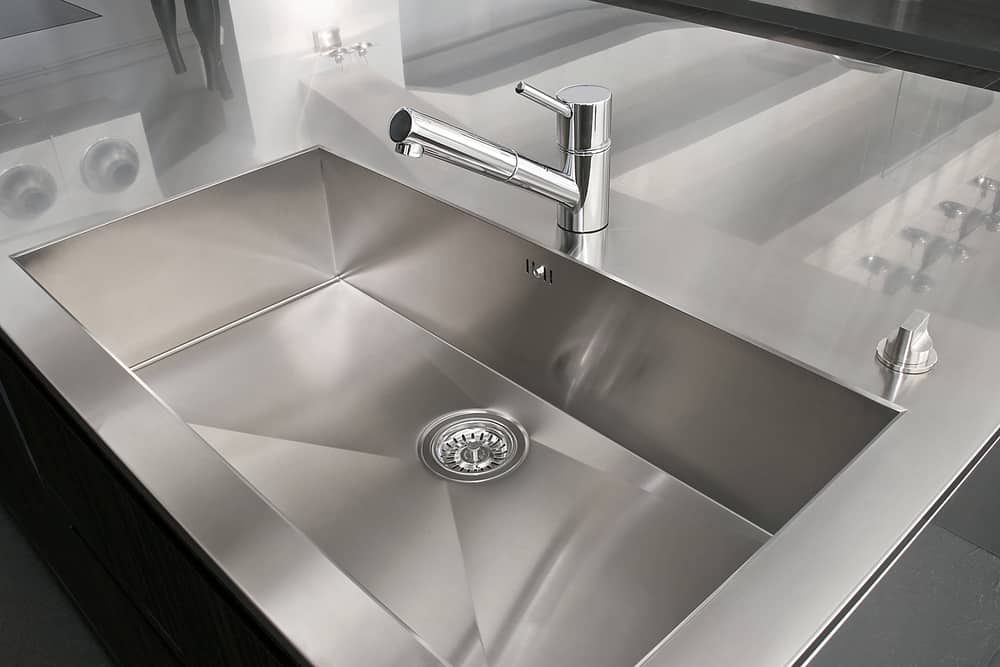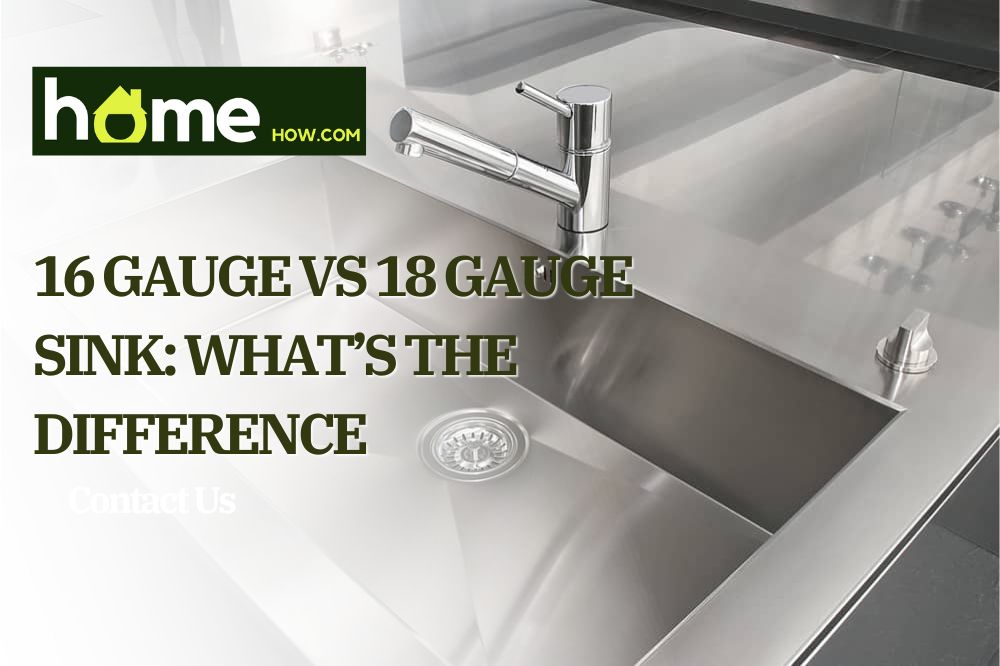The thickness of a steel sink isn’t something we contemplate until it’s time to get a new kitchen sink. So, many people are surprised that there actually are many different types of gauge stainless steel sinks out there – there’s thicker stainless steel for a luxury sink, thinner steel for the lower price ranges, and lots of grades in between.
The two most popular choices and most recommended grades you’ll see are the 16 gauge vs 18 gauge sink. What really is the difference between them, however, which is of higher quality, which is the best choice for home use or for a commercial sink, and even does the word “gauge” even mean? Let’s find out below.
What is a “gauge” as a measurement unit?
The very first thing to clear out would be the meaning of the gauge number. Somewhat counterintuitively, the higher gauges indicate thinner steel while a lower gauge number means thicker sink steel. Here’s the exact breakdown of the numbers:
- 22 gauge means 0.0312 inches of thickness
- 20 gauge means 0.0375 inches
- 18 gauge means 0.0500 inches
- 16 gauge means 0.0624 inches
There are other gauge grades too, such as 19 gauge, 14 gauge, and so on. 16-gauge and 18-gauge are the two people seem to talk the most about, however, as they are in the sweet spot of gauge steel – they are durable, resistant to denting, scratches, bowing, rust, as well as wear and tear from vibration, and more.
They are also not needlessly thick for commercial and residential uses as some of the lower gauge thickness grades (14 and below) which really are meant for more heavy duty use. So going for a lower gauge than 16 with your stainless steel sink is usually not seen as necessary.
Going too far above 18 gauge is also not a good idea in most cases, however, as the steel does become progressively thinner with each next grade. As you can see from above, 22 gauge is exactly twice as thing as 16 gauge (0.0312 vs 0.0624 inches) so the former is definitely not well-suited for most commercial or residential sinks.
As for why the gauge rating goes “backward” – that’s simply because it was defined using imperial units and there was no good way in that measurement system to measure such small thicknesses. So, the inventors of the gauge measurement just used an inverse fractional scales system instead.
A simple 16 gauge vs 18 gauge sink comparison

So, now that we know how the gauge grading work, let’s compare the 16 vs 18 gauges in particular. All in all, both are relatively similar and can work with both larger sinks and smaller sinks. Both also fit within the industry standard and are greatly preferred over thinner (higher) gauges for both residential and commercial uses.
Especially if you have a garbage disposal on your sink, thicker gauges like 18, 16, or even 14 gauges are very recommended. This isn’t to say that simply piling your dishes in your sink will break thinner gauges but some denting or bowing is to be expected if you go above 18 gauges.
In other words, the difference between 18 and 16 isn’t anything most homeowners should worry about. Still, in general, we’d recommend a 16-gauge steel sink for people with a garbage disposal in their sink simply to be sure that the constant vibrations won’t wear and tear the sink too much. If you don’t have that in your sink, however, 18-gauge should be just fine too.
What are the different types of stainless steel and do they matter for your choice?
When researching your steel sink, you’ll come across many other terms in addition to the gauge numbers of the steel. The most important of those is the steel grade – instead of measuring the steel’s thickness, its grade is a reference to the steel’s components and their properties. Stainless steel is an alloy of iron with some amounts of carbon, after all.
So, what are the main grades of stainless steel and why do they matter?
- Austenitic stainless steel – this is the most common stainless steel grade you’ll find both for kitchen sinks and for most other things. This alloy includes nickel (or manganese and nitrogen) and chromium, it’s not magnetic, it has great corrosion resistance, and it’s both very durable and easy to work with.
- Ferritic stainless steel – this alloy has low carbon contents and is magnetic which means it’s used significantly less often than the austenitic grade.
- Martensitic stainless steel – also magnetic, martensitic steel is very rarely seen in foodservice items such as sinks so you’re both not likely to encounter it and don’t need to look into it that much.
- Duplex stainless steel – a fairly new type of steel, duplex is called that way because it consists of two phases, austenite and ferrite. Duplex hasn’t been used much in food service as of yet, however, so your main choice will usually be between austenitic and ferritic steel, of which you should almost always choose the former.
What is the best austenitic stainless steel grade for a kitchen sink?
You’ll also notice that both austenitic steel and the other types also have other numbered grades on them – grade-304 or SAE 304, as well as SAE 201, SAE 430, and others.
These are the steel’s grades as defined by the Society of Automotive Engineers (SAE) and they indicate the exact contents of the alloy. For example, austenitic SAE 304 has 18% chromium and 8% nickel, which is why it’s also often called 18/8 steel.
It also just so happens to be the most common, recommended, and good grade for food service items such as kitchen sinks, closely followed by the more affordable SAE 201.
In conclusion
The exact gauge grade for your next stainless steel kitchen sink purchase should usually be 16 or 18-gauge steel, with 16-gauge being slightly thicker, more recommended, and a bit more costly. As long as your new stainless steel sink doesn’t have a garbage disposal in it, however, and it’s not for commercial use, an 18-gauge sink should work just fine too.
